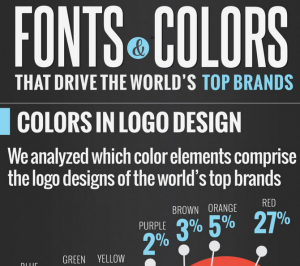Last month, we took a look at the importance of branding to successful content marketing. A part of that discussion was, as you’d expect, visual design. That makes sense, since visual design is typically the first thing most people think about when they think of branding. (Most people think of Apple’s logo, Coca Cola’s bottle or Tiffany’s blue boxes when talking about branding before Nordstrom’s incredible customer service.)
I wanted to encourage a broader discussion so I didn’t go into great depth on visual, because too many folks start and end their thoughts on branding by thinking about visual design.
With that discussion already in the books, it makes sense to think a bit more deeply about the visuals in your content marketing.
Building Visuals Into Your Content Marketing Team
First rule: include a visual pro on your content marketing team. This is particularly important if you’re a writer who doesn’t think visually. Give your designer freedom to explore ways to contribute visuals that present your content conceptually, or present your data in an interesting matter. (Bonus points if your designer has read any or all of Edward Tufte’s books.)
Most important is not making visuals an afterthought. Include your designer in early discussions about your editorial calendar and content mapping. They will likely have ideas for topics (or treatment of topics) that more word-focused folks would never dream of.
Keep Costs In Line
Obviously, it can get expensive to commission original artwork for every new piece of content you create, even if you’re using an in-house staffer. That doesn’t mean your designer gets the day off completely when you’re working on shorter form content, like quick blog posts where a stock image can do the trick.
Have him or her help you select the best accompanying visual from your stock image library. A good eye makes all the difference, especially if you’re working from one of the less expensive stock libraries. (There’s more chaff than wheat …)
And don’t forget to repurpose visuals as you repurpose content. You want to leverage as much value as you can.
Video Counts, Too
Moving up the ladder of complexity, from still photographs and illustrations, is video. Video clips can run the gamut from simple webcam shots of you or your subject-matter expert speaking directly into the camera, to full-blown productions with b-roll footage, charts and graphs, animation, etc. It all depends on your budget and, to some extent, your subject matter.
Subject matter is an important consideration because it has an impact on your audience’s expectations for production values. A quick-hit blog post, perhaps coverage of an event in the news that day, doesn’t carry the same expectations as something with more weight and depth. This makes those simpler production values much more acceptable here than they would be for an in-depth look at, say, emerging trends or a presentation of a detailed white paper. For these, time spent in the video editing suite makes good sense.
In part, this is because more in-depth videos are typically longer–there’s only so long an audience can watch you, in a t-shirt, with your office white board behind you, talk directly into the camera.
Infographics
Infographics are a relatively recent phenomena. They are a fun and engaging way to bring concepts and data to life, particularly if there’s real complexity to the content. Here is an example. There are many more available via a quick Google search.
Strike a Balance
In a world without budget considerations, visuals would be much easier to include in all of our content marketing work. Unfortunately, most of us don’t have the luxury of limitless budgets. We need to balance the desire to do all we can to keep our audience engaged using visuals, with the reality that we’re better off creating some of our content marketing to work without visuals. Just don’t make the mistake of devoting all of your budget to content of the “words on a page” variety.







